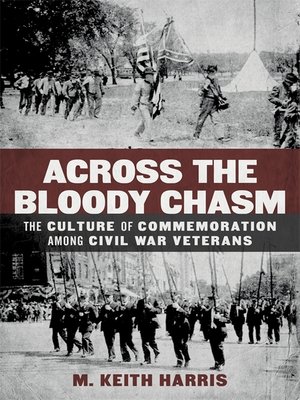Across the Bloody Chasm
ebook ∣ The Culture of Commemoration among Civil War Veterans · Conflicting Worlds: New Dimensions of the American Civil War
By M. Keith Harris

Sign up to save your library
With an OverDrive account, you can save your favorite libraries for at-a-glance information about availability. Find out more about OverDrive accounts.
Find this title in Libby, the library reading app by OverDrive.



Search for a digital library with this title
Title found at these libraries:
| Library Name | Distance |
|---|---|
| Loading... |
Long after the Civil War ended, one conflict raged on: the battle to define and shape the war's legacy. Across the Bloody Chasm deftly examines Civil War veterans' commemorative efforts and the concomitant — and sometimes conflicting — movement for reconciliation.
Though former soldiers from both sides of the war celebrated the history and values of the newly reunited America, a deep divide remained between people in the North and South as to how the country's past should be remembered and the nation's ideals honored. Union soldiers could not forget that their southern counterparts had taken up arms against them, while Confederates maintained that the principles of states' rights and freedom from tyranny aligned with the beliefs and intentions of the founding fathers. Confederate soldiers also challenged northern claims of a moral victory, insisting that slavery had not been the cause of the war, and ferociously resisting the imposition of postwar racial policies. M. Keith Har-ris argues that although veterans remained committed to reconciliation, the sectional sensibilities that influenced the memory of the war left the North and South far from a meaningful accord.
Harris's masterful analysis of veteran memory assesses the ideological commitments of a generation of former soldiers, weaving their stories into the larger narrative of the process of national reunification. Through regimental histories, speeches at veterans' gatherings, monument dedications, and war narratives, Harris uncovers how veterans from both sides kept the deadliest war in American history alive in memory at a time when the nation seemed determined to move beyond conflict.







